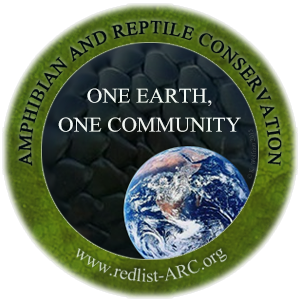|
PROTOCOLS
Practical, simple, and accurate protocols enable efficient
and meaningful research. Amphibian and Reprtile Conservation encourages reseachers to share their
protocols through this portal.
Browne RK. 2014. Formulations for
physiological salines for amphibian research. Amphibian and Reptile
Conservation. Protocols 1. PDF
Physiological salines are solutions are formulated to simulate the ionicity –
concentration of salts - of various blood and other plasmas, lymphatic fluid, and cellular
exudations. In amphibian research they are used for a variety of purposes including standardized
aquatic media for oocyte storage, egg incubation and larval rearing, and as bases for
cryodiluents. Stock solutions can be prepared and then diluted for use. If stored for any time
they should be refrigerated. In veterinary practice moribund amphibians can be placed in tubs
with physiological salines to replenish salt loss and reestablish
hydration.
Browne RK. 2014.
Measuring amphibian morphometrics with ImageJ. Amphibian and Reptile Conservation. Protocols
2.PDF
These methods use ImageJâ¢
freeware available at http://rsb.info.nih.gov/ij/
The accurate measurement of amphibian morphometrics is essential for
taxonomy, studies of growth and development, and studies of fluctuating asymmetry. The use of
digital images and ImageJ⢠enables the indefinite archiving of the source image for future
reference and gives results that are often more accurate than calliper measurements of
struggling animals. Some life stages of amphibians, particularly tadploes, are difficult to
measure by hand without risking damage.
Browne RK. 2014. Handling and injecting amphibians.
Amphibian and Reptile Conservation. Protocols 3.
PDF
There are several methods for the handling of frogs for inspection, injection of
medicines or hormones, or passive integrated transponder (PIT)
tagging. Generally
gloves should always be worn when handling frogs and toads. The wearing of gloves is
particularly important for the prevention of disease when handling frogs from different
quarantine groups. Some people are allergic to skin secretions - and some frogs have very
toxic secretions. Through not wearing gloves there is also the possibility of pathogens
including mycobacteria and chlymidea undergoing zoonotic transmission from frog to humans or
the reverse.
Browne RK. Figiel CR. Amphibian hormone cycle. Amphibian and Reptile Conservation. Protocols 4.
PDF
The
amphibian hormone cycle regulates the reproduction of female and male amphibians. The amphibian
hormone cycle is quite complex (Figure 1). As amphibians grow to maturity the gonads develop until
the testes can produce sperm and the ovaries can produce mature oocytes. Then the amphibian hormone
cycle regulates the maturity of oocytes, spermiation in the testes, and the final amplexus and
spawning finally leading to the fertilisation of oocytes and the development of eggs.
Mature amphibians don’t spawn until the right environmental cues occur. The mature gonads
themselves produce estrodiol that move through the blood stream to the brain. These estrogens
regulate the centers in the brain that respond to favourable environmental factors by producing a
hormonal cascade through the hypothalamus and then the
pituitary.
Browne RK. Figiel CR.
2014. Hormone preparation and
use. Amphibian and Reptile Conservation. Protocols 5. PDF
The
induction of ovulation of amphibians using hormones has been used since the early 20th century.
Some amphibians have never reproduced in captivity without hormones and using hormonal induction
many species can be reproduced at will. Conservation breeding programs for the flagship species,
the Wyoming toad (Bufo baxteri), Boreal toad (Bufo boreas boreas), Puerto Rican
crested toad (Peltophryne lemur), and Chinese giant salamander (Andrias
davidianus) are either completely or largely dependent on hormonal induction. Commercial
production of African clawed toads (Xenopus spp.) and also numerous other species rely on
hormonal induction.
Browne RK.
2014. Optimum egg
incubation temperature and pH. Amphibian and Reptile
Conservation. Protocols 6. PDF
The
optimum temperature at which to incubate amphibian eggs depends on several factors including
incubation range, incubation optimum, incubation fluctuation, and production parameters. Important
cofactors affecting hatch rate are pH and oxygenation. Oxygen levels should be saturated and pH for
most species at neutral of 7.
Browne RK, Antwis R. 2014.
Weighing tadpoles. Amphibian and
Reptile Conservation. Protocols 7. PDF
Where the variation in tadpole
weight within replicate tanks is not required, or where tadpoles are too small to be easily weighed
individually, tadpoles can be weighed ‘on mass’ very accurately with the minimum of disturbance or
harm to their wellbeing. This technique is commonly used in studies of tadpole growth up until
metamorphosis when individual weights must be taken. Front leg emergence is the best stage to
measure metamorphosis in anurans. The development of different organs in tadpoles during
metamorphosis, and the relative rate of each metamorphosis stage, varies considerably between
species.
Browne
RK.
Seratt J. Counting eggs and larvae. Amphibian and Reptile Conservation.
Protocols 8. PDF
Techniques used to count eggs
include the „DISPLACEMENT METHODâ, „IMAGE ANALYSISâ, and „DIRECT COUNTINGâ.
|


